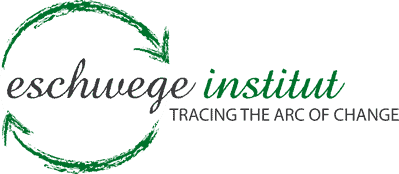Time and again we wonder what positive and irreversible consequences the Corona crisis will have for our future reality.
One is certainly that, having collectively been plunged into a kind of crash course on digital communication, fewer people will see how to fly to Munich or Hamburg for a conference, if they could be held online. The positive consequences for the ecological footprint are obvious. The rediscovery of our own country as a holiday destination will also lead to a lower number of flights after the crisis. It is no coincidence that airline giant Lufthansa expects up to 30 fewer flights after the crisis and shuts down its subsidiary Germanwings.
But back to the collective discovery of online communication, with which we are very busy here at the Eschwege Institute itself: we observe a very specific tiredness, which after a while in front of the screen with others, sets in. We wondered where it came from. We knew that it can’t just be due to the fact that you sit a lot and lose contact with your own body more easily. We can do something about this and ensure greater presence in the body.
No, there is another factor to play with and this is what we came up with in our deliberations:
When we meet with our participants in our Yurte, it is an almost effortless process to connect or feel connected with everyone in the group. This social process is like a well-trained muscle, it happens for the most part naturally and already “automatically”, or via the part of our neural system, which we call “the automaton”.
When we meet with the same group in a digital conference room online, “the automaton” also tries to establish the connection so effortlessly, but encounters new and unknown parameters. For example, the smell, the immediate radiance or the physical feeling of the others is missing. Therefore, an “automatic” connection is not as easy as usual possible.
We are forced to establish the possible and also deep connection with the group more consciously and less automatically. A less trained muscle is claimed, so to speak. We would locate it in the so-called “diplomat”, that is, in the part of our neural system, which can be found in the prefrontal lobe of our brain and with which we can be “present”, in the “now and here”.
What is exciting is that when we are present, we consume about 25 of the energy available to the brain, e.g. in the form of glucose. This is despite the fact that this area of the brain is only about 5 of its mass. We therefore assume that the unfamiliar and increased use of the ‘diplomat’ represents this particular fatigue.
However, this also means that we are collectively in a huge training camp in which the muscle of presentness is strengthened. It is also a form of social presence. We are, in a new way, for each other that “you” that the anthropologist and religious philosopher Martin Buber saw as the prerequisite for growing together as persons.
Would that not be another gift from this crisis?
Let’s observe this from this perspective and check later whether our presumption was true.
May it be so 🙂
Congratulations Holger and Gesa Heiten

